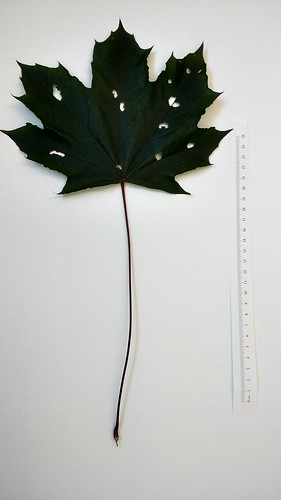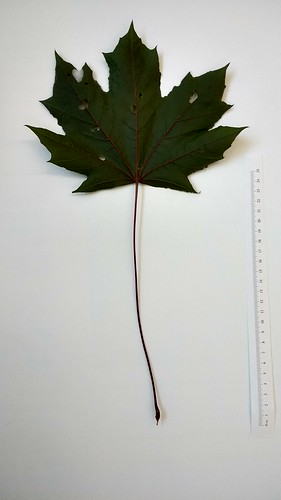Today, I collected a leaf from a distinctive purple tree near the Franklin Dining Commons. The Norway maple (Acer platanoides) is a common ornamental tree that is often planted in cities because it is hardier and more tolerant of air pollution than native Sugar maples. It has two color varieties: the purple pigmented one and an unpigmented variety that's easy to confuse with Sugar maples. If you're trying to tell them apart, the bark is different on a Norway maple (a criss-cross diamond pattern) and Norway maples have a milky white sap.
Figure 1. Acer platanoides leaf. Upper side of leaf is on left.
The leaf is very dark green—almost black, in artificial light. The veins and stem are a reddish purple, especially on the underside of the leaf.
The leaf is palmately lobed with two small lobes near the base and 5 major lobes toward the tip. I had noticed yesterday that the stem of the Horse-chestnut seemed comparatively long, but this stem is much longer relative to the leaf. The stem is half-again longer than the leaf. I noticed, however, that there was a lot of variability in stem length.
The leaf has 11 holes where presumably insects have been consuming leaf material. Most holes run along a vein. One hole spans a vein in the leaf leaving just a narrow bridge across the hole. A number of holes have a kidney shaped pattern with smooth outward borders and a ragged inner border, perhaps related to the pattern of consuming the leaf.
On the underside of the leaf is a small, white cocoon. The area is covered over with a dense layer of white silk.The silk pulls the leaf together to make a small, bent section, where the pupa is concealed.
- Steven D. Brewer's blog
- Log in to post comments


